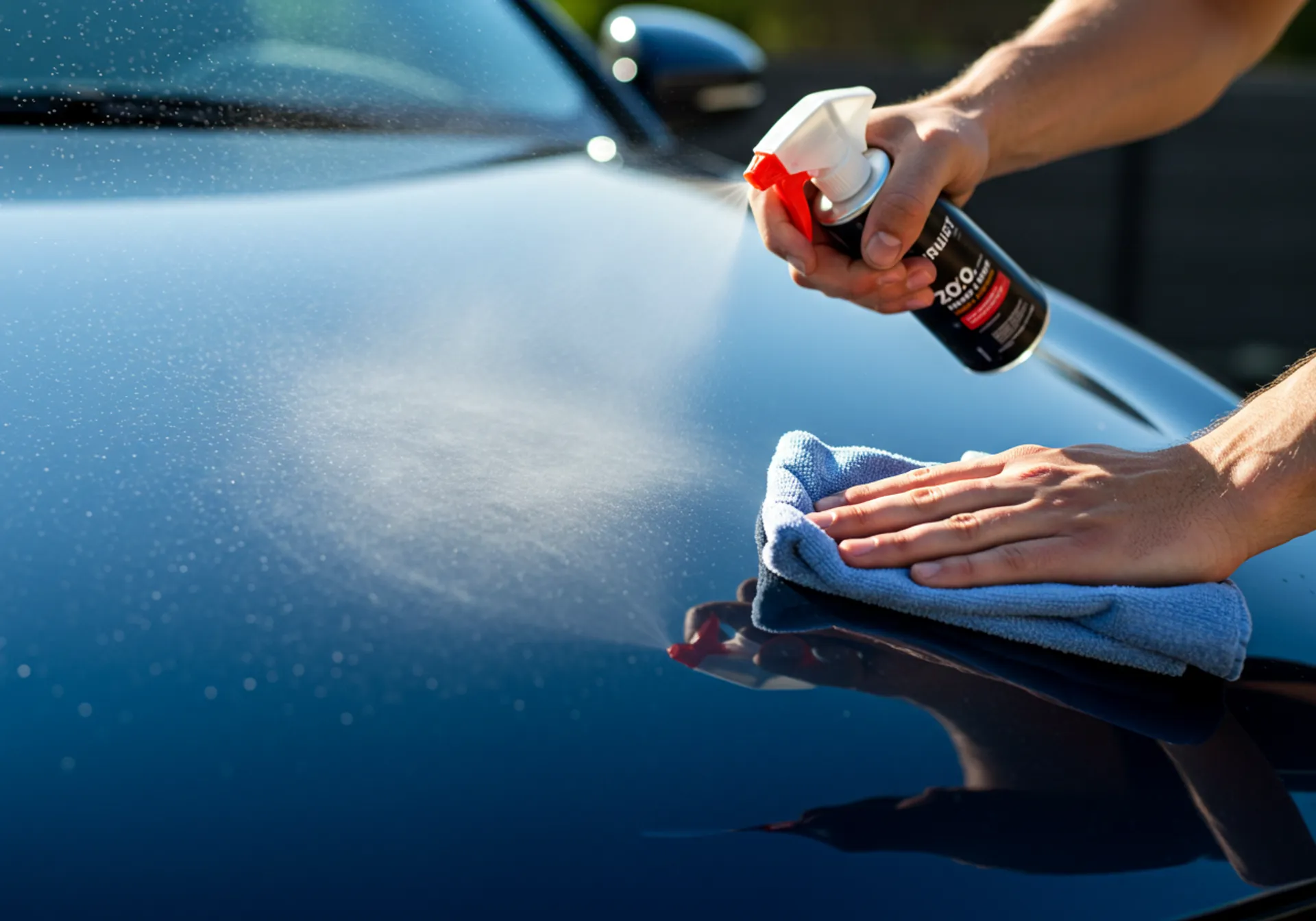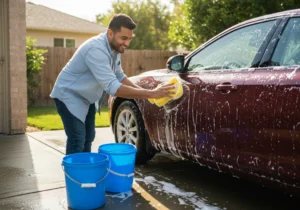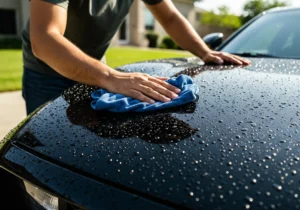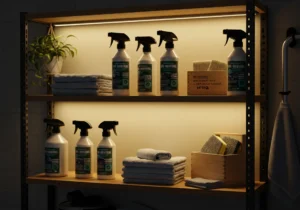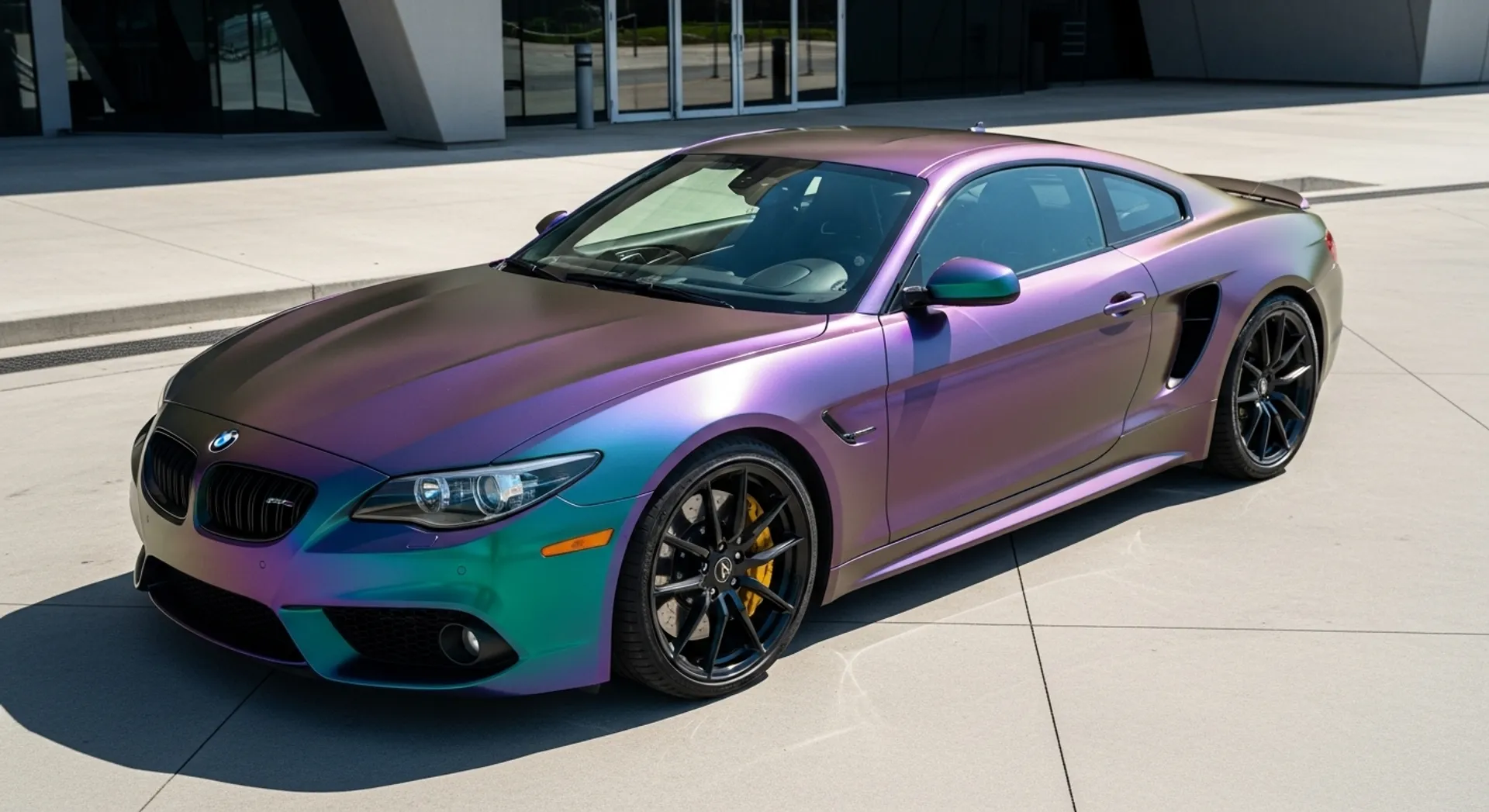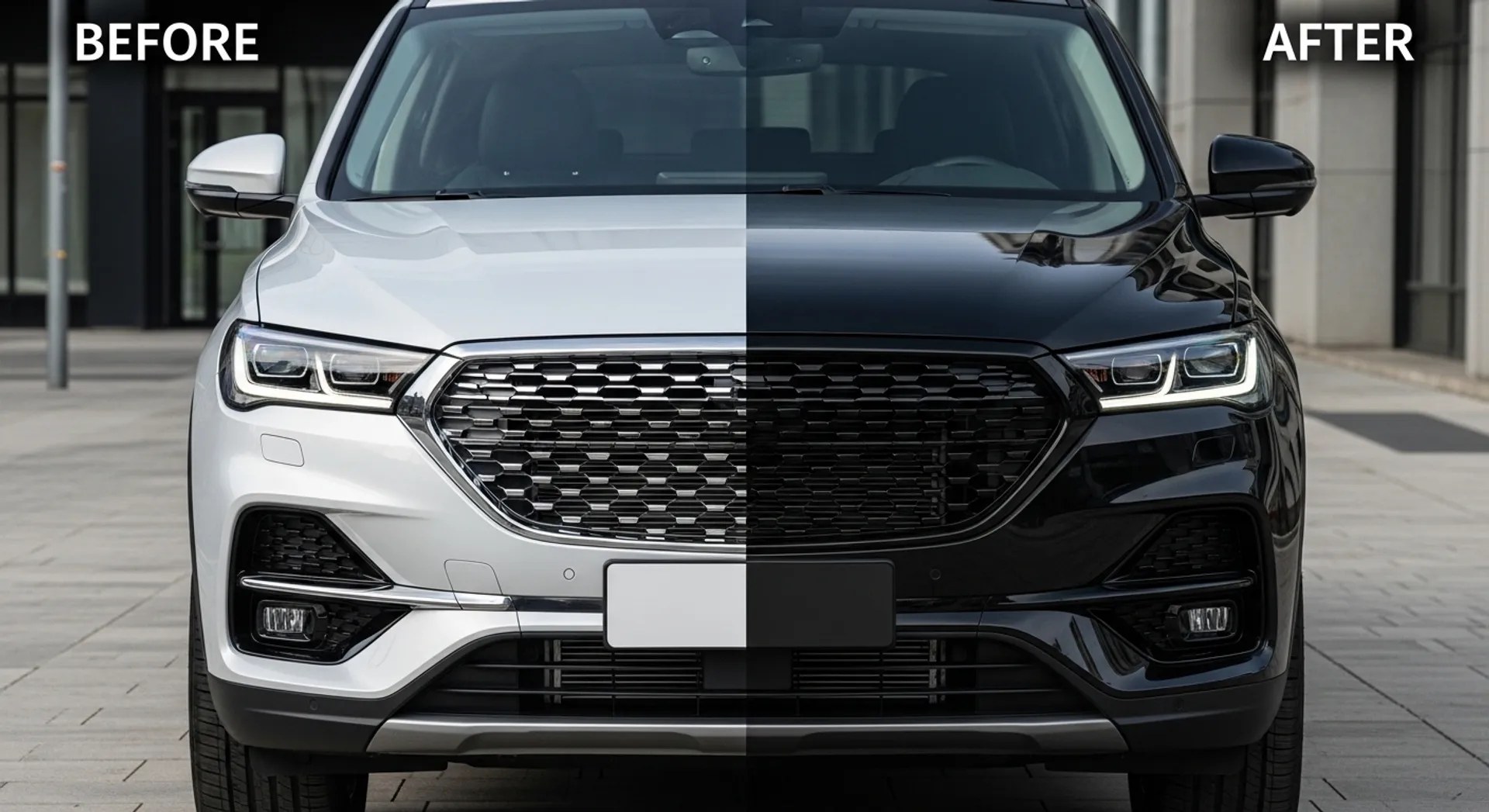Keeping your vehicle looking sharp isn’t just about pride — it’s about protection. Car paint protection acts as a barrier between your car’s finish and the harsh realities of daily driving. UV rays, acid rain, bird droppings, tree sap, and road grime can all degrade paintwork over time, leading to fading, etching, or unsightly scratches.
Maintaining paint protection coating brings distinct advantages:
- Shields against environmental hazards: Stops contaminants before they cause permanent damage.
- Enhances gloss and shine: Keeps that showroom sparkle alive for longer.
- Eases cleaning: Dirt and debris wash off more easily from a protected surface.
- Preserves value: A well-maintained exterior maintains resale appeal.
Understanding how to maintain your car’s paint protection coating is essential for anyone who values their vehicle’s appearance and long-term worth. Regular upkeep means you enjoy lasting beauty and robust defense against whatever the road (or sky) throws at your car.
Popular Methods for Protecting Car Paint
1. Ceramic Coating: The Ultimate Shield Against UV Rays and Water Damage
Ceramic coating is a liquid polymer that chemically bonds to the car’s paint, forming a durable protective layer. This method has gained popularity among car enthusiasts due to its remarkable durability and hydrophobic properties.
Advantages of Ceramic Coating
- Long-lasting Protection: Unlike traditional waxes or sealants, ceramic coatings provide extended protection, often lasting several years.
- Ease of Maintenance: The hydrophobic nature repels water, dirt, and grime, making cleaning your vehicle significantly easier.
- Enhanced Gloss: A ceramic coating enhances the paint’s depth and clarity, giving your car a showroom-like finish.
Importance of Paint Correction
Before applying a ceramic coating, it’s crucial to perform paint correction. This step involves removing any imperfections, such as swirl marks, scratches, or oxidation, from the paint surface. Paint correction ensures optimal adhesion of the ceramic coating and contributes to achieving a flawless finish. Without this step, the coating may not bond properly and could highlight existing defects instead of concealing them.
Ceramic coatings act as an ultimate shield against UV rays, preventing the paint from oxidizing and fading over time. Additionally, they offer superior resistance to water damage by creating a slick surface that causes water to bead up and roll off effortlessly.
By investing in a ceramic coating, you not only protect your vehicle’s paint but also enhance its aesthetic appeal. The combination of long-lasting durability, easy maintenance, and enhanced gloss makes ceramic coatings a top choice for car enthusiasts looking to preserve their vehicle’s appearance for years to come.
2. Paint Protection Film (PPF): Invisible Armor with Self-Healing Properties
Paint protection film (PPF), sometimes referred to as clear bra, stands out as an advanced solution for those seeking robust, invisible defense against the harsh realities of daily driving. This transparent urethane material forms a physical barrier on top of your car’s paintwork, shielding it from scratches, rock chips, road debris, and environmental contaminants that can dull the finish or cause costly damage.
Key Features of Paint Protection Film
- Transparency: PPF is engineered to be virtually invisible once applied, preserving the original look and gloss of your vehicle’s paint.
- Self-Healing Properties: One of the most impressive qualities of modern PPF is its ability to self-heal. Minor scratches and swirl marks disappear with exposure to heat — either from sunlight or warm water — helping to maintain a flawless appearance with minimal effort.
- UV Protection: While ceramic coating offers chemical UV protection, PPF adds a physical shield against harmful rays, reducing the risk of paint fading or discoloration.
- Hydrophobic Surface: Many premium films add water-repellent properties similar to ceramic coatings, making the surface easier to clean and less prone to water spots.
The Professional Installation Advantage
Installing paint protection film is not a DIY task for most car owners. Professional application ensures:
- Precise Fitment: Technicians use pre-cut templates or custom-fit the film onsite for seamless coverage — even wrapping around edges and curves where damage is most likely.
- Flawless Finish: Proper installation eliminates bubbles, creases, or visible seams that would detract from your car’s aesthetics.
- Long-Term Durability: High-quality films combined with expert techniques help maximize longevity — many PPF products come with warranties ranging from 5 to 10 years.
Comparison With Other Methods
Unlike car wax or spray wax — which provide only short-term protection and require frequent reapplication — or paint sealants that rely on synthetic formulas for longer but still limited defense, PPF delivers a resilient layer that physically absorbs impacts and contamination. While ceramic coatings excel at hydrophobicity and gloss enhancement, they do not offer the same level of impact resistance as PPF.
Paint protection film complements other methods discussed in this article by offering unique self-healing and impact-resistant properties. The choice depends on your priorities — whether you value invisible armor against chips and scratches or prefer easy maintenance with a shiny finish.
3. Car Wax and Spray Wax: Quick Solutions for Shine and Short-Term Protection
Car wax has long been a staple for drivers seeking to maintain a shiny finish and shield their vehicle’s paint from the elements. Traditional car wax typically comes in paste or liquid form, offering a layer of protection that repels water, enhances gloss, and provides some degree of UV protection. These waxes contain natural ingredients like carnauba or synthetic polymers designed to create a slick surface that dirt and dust struggle to stick to.
Differences Between Traditional Car Wax and Spray Wax
| Traditional Car Wax | Spray Wax |
| Usually applied by hand with an applicator pad, then buffed off with a microfiber towel. The process can take up to an hour, depending on the vehicle’s size. | Designed for speed and convenience. Simply spray onto the surface and wipe off—no waiting for hazing or labor-intensive buffing required. |
| Lasts anywhere from four to eight weeks under normal driving conditions. | Provides a quicker, more effortless application but typically offers protection for just a couple of weeks at most. |
Why Choose Spray Wax?
Spray wax is ideal when you need a fast way to boost your vehicle’s shine between washes or after rain. It works as an easy maintenance solution even for cars protected with ceramic coating or paint sealants, helping to maintain hydrophobic properties without interfering with existing layers.
“A quick spray-and-wipe can bring back that showroom gloss in minutes, making it perfect for busy schedules or touch-ups before events.”
Short-Term Protection vs. Long-Term Solutions
While both traditional car wax and spray wax deliver immediate visual enhancement and water repellency, neither matches the durability of modern solutions like ceramic coating, paint protection film (clear bra), or advanced paint sealants with synthetic formulas. Waxes do not offer self-healing properties or the extended UV protection found in these newer methods.
For best results:
- Use traditional car wax as part of regular detailing if you enjoy hands-on care.
- Keep spray wax handy for maintaining gloss during weekly washes or after exposure to rain.
Car owners who want longer-lasting defense should look at alternatives such as ceramic coatings or paint protection film, which offer superior resistance against environmental hazards while reducing maintenance frequency.
4. Paint Sealants: Long-Lasting Defense with Synthetic Formulas
Paint sealants provide a strong layer of protection using advanced synthetic formulas that bond directly to your vehicle’s paintwork. This technology sets them apart from car wax or spray wax, offering a shiny finish that can last for several months instead of just weeks.
Key features of paint sealants:
- Synthetic Polymer Structure: Designed with chemical compounds that form a tight bond with the paint surface, creating a resilient shield against UV rays and harsh weather.
- Extended Durability: Most paint sealants last four to six months per application, outlasting traditional wax and providing reliable, low-maintenance coverage.
- UV Protection: The formula acts as a barrier, minimizing sun-induced fading and oxidation that can dull your vehicle’s appearance.
- Water Repellent Properties: Similar to ceramic coating, quality sealants repel water and reduce the adhesion of dirt, sap, and other contaminants — making routine cleaning easier.
- Versatility: Suitable for use on all exterior painted surfaces, often compatible with plastic trim and chrome.
“A well-chosen paint sealant bridges the gap between short-term solutions like car wax and high-end options such as ceramic coating or paint protection film (clear bra).”
While paint correction is not always necessary before applying a sealant, prepping the surface by removing embedded contaminants with clay and ensuring it’s free from oxidation will maximize bonding and visual clarity. Paint sealants remain a solid choice for drivers seeking durable UV protection and environmental defense without the commitment of more permanent coatings.
Maintaining Your Car’s Paint Protection Coating: Essential Tips for Longevity
1. Hand Washing Techniques: Gentle Care for Your Protective Coating
Proper hand washing is crucial in maintaining your car’s paint protection coating. The right techniques help prevent scratches and preserve the integrity of the protective layer. Here are some essential tips:
Choose the Right Detergent
Use a mild automotive detergent specifically designed for vehicles. Avoid household detergents as they can be too harsh and strip away the protective coating.
Microfiber Wash Mitts
Opt for high-quality microfiber wash mitts instead of sponges or brushes. Microfiber mitts are gentle on the surface and effectively lift dirt without scratching.
Two-Bucket Method
This method involves using two buckets–one for soapy water and another for rinsing. After each pass with the wash mitt, rinse it in the clean water bucket to remove dirt before dipping it back into the soapy water. This helps minimize the risk of reintroducing contaminants that could scratch the surface.
Pre-Wash Rinse
Always start with a thorough pre-wash rinse using a hose or pressure washer to remove loose dirt and debris from the car’s surface. This reduces the likelihood of causing scratches during the hand washing process.
Gentle Washing Motion
Use a gentle, straight-line motion rather than circular motions when washing your car. Circular motions can create swirl marks on the paint protection coating.
Regular Maintenance
Hand-wash your vehicle regularly to prevent dirt buildup, which can become abrasive over time and damage the protective layer.
Proper Drying Techniques
Drying your car properly is just as important as washing it. Improper drying can lead to water spots and streaks, which can mar the appearance of your paint protection coating.
- Microfiber Towels: Use soft microfiber towels for drying, as they are highly absorbent and gentle on the coated surface.
- Blotting Method: Instead of dragging the towel across the surface, use a blotting technique to absorb water. This minimizes friction and reduces the risk of scratching.
- Avoid Air Drying: Never let your car air dry, as this can result in unsightly water spots caused by mineral deposits in tap water.
Additional Tips for Hand Washing
Maintaining your car’s paint protection coating requires attention to detail beyond just washing and drying:
- Regular Inspections: Periodically inspect your car’s surface for contaminants such as bird droppings, tree sap, or bug splatters. Remove them promptly using a gentle cleaner specifically formulated for coated surfaces to avoid staining or etching.
- Quality Products: Invest in high-quality cleaning products that are pH-balanced and safe for use on protected surfaces. These products help ensure that you do not inadvertently strip away or damage your paint protection coating during routine maintenance.
By following these hand washing techniques, you can effectively maintain your car’s paint protection coating, ensuring it continues to provide optimal protection and an impeccable shine over time.
2. Avoiding Automated Car Washes: Preserving the Integrity of Your Coating
Automated car washes might seem convenient, but they can actually do a lot of harm to your car’s paint protection coating. The brushes and cloth strips used in most drive-through systems are often dirty from previous vehicles. This dirt can scratch or damage both regular paint and advanced coatings like ceramic or paint protection film (PPF).
Key reasons to avoid automated car washes:
- Abrasive Brushes: Even “soft” brushes or cloths can trap dirt and debris, acting like sandpaper on your vehicle’s finish.
- Harsh Chemicals: Many automated systems use strong detergents designed for speed rather than gentle care. These chemicals can strip away waxes, degrade synthetic sealants, and reduce the water-repelling qualities of ceramic coatings.
- Inconsistent Pressure: High-pressure jets may force water and debris into seams and under protective films, potentially causing edges to lift or creating microtears in the coating layer.
When you invest in paint protection — whether it’s a premium ceramic coating or a professionally installed PPF — the longevity and effectiveness of that investment rely heavily on how you maintain your vehicle. Automated car washes undermine this effort by introducing unnecessary wear.
Maintaining your coating starts with hand washing techniques, which allow you to control every step of the process. Using automotive detergent and microfiber wash mitts ensures that dirt is lifted safely away from the surface without inflicting damage. This method far surpasses the one-size-fits-all approach of automated facilities.
Protecting the integrity of your coating means making careful choices about how you clean your car. By steering clear of automated car washes, you preserve not just the look but also the performance of whatever protection method you’ve chosen.
3. Drying Carefully: Preventing Water Spots on Your Coated Finish
Water spots are one of the most common issues that compromise the look of a freshly protected car surface. Even after perfect hand washing techniques, improper drying can leave behind mineral deposits that etch into ceramic coatings, paint protection film (PPF), or waxed finishes.
Why Soft Microfiber Towels Make a Difference
Microfiber towels excel at trapping and lifting water away from the paint without dragging dirt or debris across the surface. This minimizes swirl marks and preserves the clarity of your paint protection coating. High-quality microfiber is gentle enough to avoid marring delicate surfaces, critical for maintaining both gloss and protective performance.
Gentle Drying Techniques You Should Use
- Blotting Instead of Rubbing: Gently lay the towel over wet panels and pat dry, rather than wiping back and forth. This reduces friction and prevents accidental scratching.
- Work in Sections: Dry one section at a time, starting from the top and working down. Gravity helps prevent water from dripping onto already-dried areas, keeping your process efficient.
- Use Multiple Towels: Rotate between several clean towels for best results. A saturated towel will reintroduce moisture and can streak surfaces.
- Consider a Car Dryer or Blower: Touchless drying with a filtered air blower eliminates physical contact altogether, ideal for intricate areas like mirrors, grilles, or emblems.
“The number one cause of water spots after washing isn’t hard water — it’s skipping proper drying steps.”
Combining these drying techniques with proper hand washing methods using automotive detergent and microfiber wash mitts forms the backbone of how to maintain your car’s paint protection coating. Skipping this step leads to mineral buildup that not only dulls gloss but also shortens the lifespan of advanced coatings.
A consistent approach to gentle drying safeguards your vehicle’s finish while keeping maintenance straightforward and effective. The right tools and habits make it easy to preserve that flawless, just-coated appearance after every wash.
4. Using pH-Balanced Cleaners: Safeguarding Your Protective Layer from Stripping Agents
To keep your car’s paint protection coating in good shape, you need to be careful about the cleaning products you use. It’s important to choose pH-balanced car shampoos or cleaners made specifically for cars. This way, you can avoid removing the protective coatings when you wash your car regularly.
Benefits of pH-Balanced Cleaners:
- Preserves Protective Coatings: Unlike harsh detergents, pH-balanced cleaners are formulated to be gentle on your vehicle’s surface. They effectively remove dirt and grime without compromising the protective layer.
- Prevents Chemical Damage: Harsh chemicals can lead to premature degradation of ceramic coatings, paint protection films (PPF), and sealants. pH-balanced cleaners minimize this risk, ensuring long-lasting protection.
- Enhanced Cleaning Efficiency: These specialized cleaners are designed to work in harmony with your car’s protective coating, providing thorough cleaning without leaving residues that could affect the gloss or hydrophobic properties.
Proper Hand Washing Methods Using Automotive Detergent and Microfiber Wash Mitts:
- Choose the Right Products: Select a high-quality, pH-balanced automotive shampoo to maintain the effectiveness of your car’s paint protection coating.
- Use Microfiber Wash Mitts: These mitts are gentler than traditional sponges and significantly reduce the likelihood of scratches while washing.
- Two-Bucket Method: Utilize one bucket filled with soapy water and another with clean water for rinsing your wash mitt. This method helps prevent dirt particles from re-contaminating the soapy water.
- Rinse Thoroughly: After washing, rinse your vehicle thoroughly to remove all soap residues, which could attract more dirt if left on the surface.
By using these hand washing techniques and choosing pH-balanced cleaners, you can make sure that your car’s paint protection coating stays intact and continues to work effectively for a long time.
The Advantages You Gain from Maintaining Your Car’s Paint Protection Coating Over Time: A Long-Term Investment Worth Making!
Consistent care is the foundation of safeguarding vehicle finish. When you dedicate time to maintaining your car’s paint protection coating, you unlock benefits that go beyond appearance:
- Prolonged Lifespan of Coatings and Films: Regular hand washing, careful drying, and use of pH-balanced products ensure that ceramic coatings and paint protection films retain their integrity. The protective barrier remains uncompromised, meaning contaminants like bird droppings or acid rain are less likely to etch or stain your paint.
- Optimal Gloss and Hydrophobic Performance: Dirt, dust, and road grime can dull the surface over time. Simple steps — such as gentle washing and prompt contaminant removal — allow the coating’s hydrophobic effect to shine, keeping water beading and the glossy finish intact.
- Simplified Cleaning Routine: Well-maintained protection coatings make cleaning much easier. Grime adheres less stubbornly, so you spend less time scrubbing and reduce the risk of swirl marks or scratches.
- Preserved Resale Value: Vehicles with well-maintained coatings look newer for longer. Buyers notice a deep, consistent shine without visible damage — a strong selling point when it’s time to trade in or sell.
- Cost Savings Over Time: Understanding how to maintain your car’s paint protection coating can help you save on future repair costs by reducing the frequency of paint correction or touch-ups needed.
Every maintenance step contributes directly to the longevity and effectiveness of your investment. Skipping routine care shortens protection lifespan; prioritizing it keeps your vehicle looking its best year after year.

